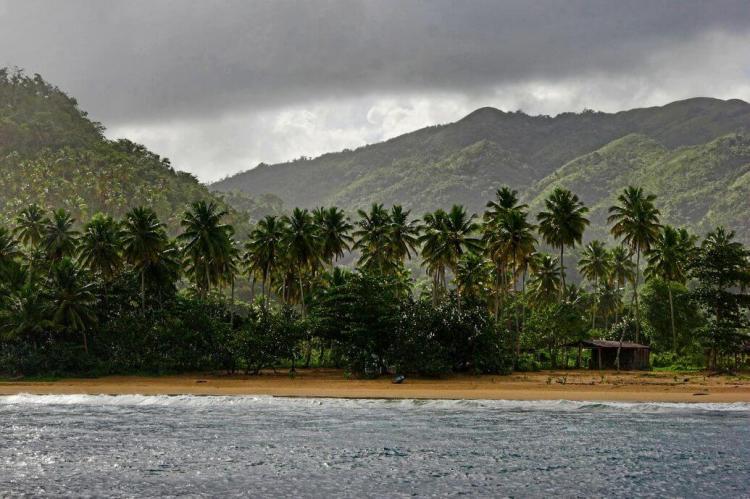Hispaniolan Moist Forests: A Critical Tropical Ecoregion
The Hispaniolan moist forests on Hispaniola, spanning the Dominican Republic and Haiti, are rich in biodiversity but have suffered degradation due to human activities. Conservation efforts now focus on preserving the remaining patches of this once-expansive ecoregion.
The Hispaniolan Moist Forests: A Tropical Broadleaf Ecoregion
The Hispaniolan moist forests represent a vital tropical broadleaf forest ecoregion on the island of Hispaniola, encompassing parts of the Dominican Republic and Haiti. These forests are rich in biodiversity, supporting numerous unique species of flora and fauna. Despite their ecological significance, they have experienced significant degradation over time due to human activities, such as deforestation and agricultural expansion. Today, conservation efforts focus on preserving the remaining patches of this ecoregion, which once covered vast portions of the island.
Geographical Distribution
The Hispaniolan moist forests are found across various landscapes on the island, including lowland areas, valleys, plateaus, and the slopes and foothills of mountain ranges. These forests occupy much of the eastern portion of the Dominican Republic, stretching from coastal regions to higher altitudes. In Haiti, the forests cover parts of the Tiburon Peninsula in the south and the Massif du Nord in the north. The ecoregion extends up to elevations of around 2,100 meters (6,900 feet) and plays a vital role in sustaining the island’s river basins.
Historically, these forests covered approximately 60% of Hispaniola’s original vegetation, about 46,000 square kilometers (18,000 square miles). However, over the centuries, their area has been drastically reduced due to deforestation, illegal logging, and the expansion of agriculture. Today, less than 15% of the original forest remains.
Ecological Characteristics
Hispaniolan moist forests are classified into different types depending on their elevation and moisture levels. These include lowland and montane mesic (moderate moisture) and lowland and montane wet forests. Mesic forests typically receive between 1,000 and 2,000 millimeters (39 to 79 inches) of annual rainfall, while wet forests can receive over 4,000 millimeters (160 inches) annually.
The variety of flora within the moist forests changes according to the altitude and specific soil conditions. Lowland areas are home to species adapted to more moderate moisture levels, while montane regions host plants that thrive in wetter conditions. In addition to the native trees and plants, the forests provide habitat to many endemic species, especially in the higher elevations, where conditions become more unique to the island.
Flora and Fauna
The Hispaniolan moist forests are home to a wide variety of plant and animal life, many of which are unique to the island. Plant species in these forests vary depending on elevation and rainfall, with distinctive tree species found in lowland and montane areas. Some parts of the forest contain trees that thrive in moderate moisture levels, while others feature species suited to wetter environments.
The fauna of the Hispaniolan moist forests is equally diverse. Various bird species inhabit these forests, many endemic to Hispaniola. Some of the most notable birds include the Hispaniolan amazon and Hispaniolan woodpecker. Additionally, mammals like the Hispaniolan hutia and the Hispaniolan solenodon, both native to the island, are found in this ecoregion. The moist forests also support a range of reptiles, amphibians, and insects that contribute to the ecological balance of the forest.
Conservation and Threats
Human activities pose considerable threats to the Hispaniolan moist forests. Illegal logging, agricultural expansion, firewood gathering, and livestock grazing have caused significant destruction, leading to the loss of over 90% of the original forest cover. As a result, many species that rely on these habitats are at risk, and the ecosystem's overall health is in jeopardy.
Despite these challenges, efforts to protect the remaining patches of moist forest are underway. Conservation initiatives in the Dominican Republic and Haiti have established protected areas that include portions of this ecoregion. However, enforcing environmental regulations remains challenging, particularly in Haiti, where deforestation has been widespread.
Protected Areas in Haiti
In Haiti, the conservation of the Hispaniolan moist forests is concentrated in two main protected areas:
Pic Macaya National Park
Located in the Massif de la Hotte in southern Haiti, Pic Macaya National Park preserves some of the country's most ecologically significant moist forests.
La Visite National Park
La Visite National Park in the Massif de la Selle also contains important moist forest areas, though deforestation and human encroachment remain pressing concerns.
Protected Areas in the Dominican Republic
The Hispaniolan moist forests are partially protected in several national parks and reserves in the Dominican Republic. These include:
Los Haitises National Park
Located in the northeastern part of the Dominican Republic, Los Haitises National Park contains coastal and inland moist forests, protecting a variety of native species.
Armando Bermúdez National Park
Armando Bermúdez National Park protects significant portions of montane moist forests in the Cordillera Central.
José del Carmen Ramírez National Park
Adjacent to Armando Bermúdez National Park, this park safeguards important sections of moist forests in the Cordillera Central.
Sierra de Bahoruco National Park
Sierra de Bahoruco National Park, located near the border with Haiti, contains moist forests and pine forests at higher elevations.
Valle Nuevo National Park
Valle Nuevo National Park, known for its unique montane ecosystems, protects several moist forest areas in the central highlands.
Conclusion
The Hispaniolan moist forests are a critical ecoregion that sustains a wealth of biodiversity unique to the island. Despite facing substantial threats, efforts to conserve the remaining forests are underway, with protected areas in the Dominican Republic and Haiti playing a key role in safeguarding these valuable ecosystems. Continued conservation efforts are essential to protect the island's flora and fauna from further degradation and to ensure the long-term survival of the Hispaniolan moist forests.

Map depicting the location of the Hispaniolan moist forests (in purple)
